Review: LG Spectrum for Verizon Wireless
Jan 26, 2012, 12:47 PM by Eric M. Zeman
LG's Spectrum covers all the modern smartphone basics and adds some great features, such as an HD display. See what LG got right — and wrong — in its latest smartphone for Verizon Wireless.
Form
Is It Your Type?

LG debuts its top-of-the-line smartphone for Verizon in the Spectrum. This slick handset boasts an HD screen, LTE 4G, and a dual-core brain. Are you seeking that kind of action in a smartphone? If you're looking for plenty of performance and plenty of power, you can do worse than the Spectrum. The Spectrum makes improvements to its predecessors all the way around, but does LG's latest for Big Red go far enough?
Body
The LG Spectrum is a slab-style phone with a large touch screen and large dimensions to match. Like so many other phones, it's all glossy black with few unique design aspects. Yay: shiny black plastic rectangle!
The Spectrum is thin, light, and comfortable to hold. The materials are glossy and attract a gross layer of finger oils that doesn't ever seem to go away no matter how much you rub the phone on your pants. It feels greasy, and greasy is gross. The plastics don't feel cheap, but they don't feel like high-quality materials, either. The assembly is good; all the seams fit snugly, and there's nothing loose or creaky. The rounded corners and smooth surfaces mean it will slip into your pocket without any trouble.
For such a large phone, I was disappointed by the amount of bezel surrounding the display. The Spectrum uses three capacitive keys on the front instead of the usual four for Android smartphones. The menu and search keys have been combined. A short press opens the menu; a long press opens the search tool. I found these buttons to be responsive to the touch. The home key looks like a physical button thanks to some visual trickery, but it's capacitive just like the others.
The volume toggle is on the left side, and has a cheap feel to it. It's easy to tell if you're pressing the up or down side of the toggle, but the travel and feedback aren't rewarding.
There are no controls on the right edge or the bottom. Instead, everything else is placed up on the Spectrum's top edge. The 3.5mm headset jack, the microUSB port with hatch, and lock button are spaced out along the top with enough room in between to use all three at the same time.
The lock button is too small for my tastes. This is the most important button on the entire phone, it needs to be large, easy to find, and offer good travel and feedback. The Spectrum's is none of these. The hatch protecting the microUSB port is fine, though I'd rather it weren't there. It's a standard microUSB port, and supports HDMI via an MHL adapter. I can't stand when the charging port is located on the top of the phone, though, as it makes it awkward to make a phone call when charging the device.
The battery cover encompasses the entire back surface of the Spectrum. It comes off without a problem. The battery is massive and provides the Spectrum with 1830 mAh of juice. The microSD slot is accessible for hot-swapping memory cards without yanking the battery.
The Three S's
Screen
The Spectrum's display is one of its better traits. The Spectrum sports a 4.5-inch, IPS LCD with 1280 x 720 pixels. That lets it lay claim to the vaunted "HD display" descriptor. It is gorgeous. Individual pixels are hard to pick out. The display is also bright and produces accurate colors. It works fairly well when out in sunshine, especially for uses such as taking pictures. It is a rich display that shows all the colors of the spectrum in the best light possible.
Signal
The Spectrum can use both Verizon's LTE 4G network and its older CDMA EVDO 3G network. The Spectrum performed at about the same level as other Verizon phones would on the 3G network. The Spectrum didn't drop any calls during my tests. Data sessions over 3G were a bit on the slow side. The Spectrum was a rock star on Verizon's LTE network. In the tests I conducted, it easily latched onto 4G and data sessions were noticeably faster than 3G. When I moved from a 4G zone to a 3G zone, the hand-off to the slower network interrupted the data session briefly, but it resumed without any action on my part.
Sound
I was not impressed with the quality of voice calls. Calls are best heard with the volume set all the way up, but the cost is a nasty distortion that sometimes make voices unintelligible. The distortion goes away if you dial back the volume a bit, but then it isn't as easy to hear because the earpiece isn't all that powerful. It's a bad case of darned if you do, darned if you don't. The speakerphone performs in a similar manner. Turn it up all the way, and you get a distorted, garbled mess that's really audible. Leave it at about halfway, and you'll do alright only in a small, quiet room. The ringers and alert tones are plenty loud, and the vibrate alert is significantly strong.
Battery
The Spectrum is an average smartphone when it comes to battery life. It consistently lasted from the time I woke up to the time I went to bed with heavy use on a full charge. That includes checking and writing emails, checking my RSS feeds a lot, posting to Twitter, light browsing, and some phone calls. I had the 4G radio on all the time, and the Wi-Fi radio, too. If you're starting the day with half power, though, be sure to have a charger handy.
Basics
Menus
The Spectrum runs Android 2.3.5 Gingerbread with some light tweaks to the appearance of the icons and menus thanks to LG. It will be updated to Android 4.0 at some point later this year, but neither Verizon nor LG has indicated when.
It offers seven home screens for personalization, and the dock at the bottom of the screen has four items in it (phone, messaging, browser, apps). You can switch these out for something else if you want to, but it's a headache to do so.
LG has its own tool for customizing the home screen with widgets and shortcuts, etc. It slides up from the bottom of the screen and give you a small selection of widgets in grid form to choose from. You can easily sort between widgets, apps, shortcuts, and folders using this tool thanks to some buttons at the bottom.
The main app menu is a disaster. There are only two possible views: a vertical list, or an LG-organized grid/folder system. The vertical list is organized alphabetically and is interrupted by HUGE bars that let you know you've reached apps that start with the letter F or the letter U. Wasted space. The LG-designed grid offers apps grouped by category. The categories are arbitrary ones chosen by LG/Verizon, such as Communications, HD, Media, and Verizon Wireless. The categories can be added, deleted, and moved around however you see fit. You can also transport apps between categories if you wish. It's not exactly user friendly, though and takes a lot of time to customize properly.
The notification shade hasn't been customized in any truly unique way, but it does provide controls to toggle on/off the cellular, Wi-Fi, Bluetooth, and GPS radios, as well as the sound.
The Spectrum makes huge performance improvements over other LG smartphones we've recently reviewed. Though it has much of the same software on board, it is speedy throughout the user interface. I didn't notice any problems such as slow apps or stuttering screens. It feels smooth and natural, and doesn't make me want to pull my hair out.
Calls/Contacts
The LG Spectrum uses the stock Android phone software, though it has been skinned by LG so it looks slightly different. The phone application is simple and straightforward and offers the typical set of tools, such as speakerphone, muting, and adding a line.
The phone app includes the contact database, which is accessible via one of the tabs at the top of the screen. Contacts can hold a ton of data, including multiple phone numbers, email addresses, web sites, street addresses, and more. There is one home screen widget for contacts which lets you place either six or nine of your top contacts on one of the seven panels. This widget gives you easy access to those few people, and offers shortcuts for sending them texts, emails, or calling them.
As with all Android 2.3 devices, it adds details from Facebook and other accounts to your contact database and keeps everything synced.
Messaging
The standard email and Gmail clients are on board to help manage emails. Both apps work well and don't need more than an email address and password to set up. The Spectrum works with Exchange, POP, and IMAP no problem, and supports multiple Gmail accounts.
The stock SMS/MMS is at your disposal for composing missives, if you wish, and includes some text template snippets, such as "Be there soon!" You can also insert image, video, and audio files at will, which appear in line with other messages in the threaded conversation.
Google Talk is the only instant messaging client on board. You can snag others from the Android Market, if you wish.
The Spectrum does not come with the native Google+, Twitter, and Facebook apps. You have to download them yourself.
Lastly, there are two generic social networking widgets, one called Friends+ and the other called Social+. Friends+ is sort of like the contact widget, but on steroids. Instead of simply providing access to your contacts, it also provides a view into their most recent communications with you. You can scroll through your friends, and see all their texts, calls, emails, and social networking messages, as well as reply via whichever method you prefer.
Social+ is a catch-all status update catcher. It lets you scan the status updates your Facebook friends and Twitter friends post, and can be used to send status updates to both social network services. You can also choose to import RSS-based content into this app.
Extras
Media
Music
The new Google Music is the default media player on the Spectrum. It lets users store and access their own songs from the cloud, as well as sample, download, and listen to new music by track or by album. Google Music can be used to stream your content over the network, and you can also sync playlists to the phone's storage for listening when offline.
The actual Google Music store itself is OK, but doesn't compare to the selection of the iTunes or Amazon MP3 music stores.
Beyond Google's software, there is a ridiculous amount of software on board from Verizon: Rhapsody, V Cast Media Manager, V Cast Tones, BitBop, and TuneWiki.
Video
The Spectrum has the stock Android video player, which handles both recorded and side-loaded content. It also has the stock YouTube application, which continues to be really good. You can rent movies from the Android Market. Rental prices are in-line with those of other services.
As far as sharing media is concerned, the Spectrum ships with software called "SmartShare." This uses the DLNA protocol to push music, pictures, and videos to other DLNA devices, such as HDTVs.
The Spectrum ships with BlockBuster, Netflix, NFL Mobile, Smart Movie HD, Verizon Video, and Video Surf. Wanna spend a buck or two on video content? Verizon makes sure you have plenty of places to waste your money.
Media Widget
The Spectrum has this crazy huge media widget that takes up an entire home screen panel. It's a carousel that floats in the middle of the screen and you swipe up or down to see your videos, albums, photos, and so on. It's a neat way to provide access to media files without sticking fifteen different widgets on the home screen. It offers previews of the content in each category, such as recent pictures you've taken, or recently added music to your library.
Camera
Camera
The Spectrum has an 8-megapixel camera with autofocus and a flash. There's no physical camera button, so you have to access the camera from a shortcut or the app menu. It launches in a snap.
The basic shooting screen uses about two-thirds of the display as the viewfinder. On the right, there's a standard control strip. Along the left, there's a control strip which offers access to items such as scene modes (panorama, etc.), ISO, metering, white balance, shooting mode, and more.
When you're ready to take a picture, press the on-screen shutter button. The Spectrum takes about a second to focus, and then snaps the image. (If you want, press the subject you'd like to be the focus of the image, as the Spectrum supports touch-to-focus.) A review screen pops up instantly. You need to tap the screen to get back to the camera.
The camera software performs well across the board. It doesn't have any speed issues, and even though you have to tap a button to get from the review screen back to the viewfinder, you can capture a series of shots fairly quickly.
Gallery
The gallery is the boring old stock Android option. Photo albums float in stacks in the main gallery view and the Spectrum syncs with your online accounts such as Google+ and Picasa, so you'll see those photos, too.
Unfortunately, the Spectrum includes only the most basic editing functions (crop and rotate). There are no other editing tools, nor is there any third-party software for editing photos pre-installed. You have to download one yourself if you're interested in making changes to images.
You can, however, easily share photos to the social network of your choice via the standard Android gallery tools.
Photos/Video
Photos
The Spectrum does a decent job at capturing images. The sensor and software together were able to accurately and consistently handle white balance, focus, and exposure. As with most handsets, shots taken indoors were subject to more grain, but it wasn't too bad. The flash helps when you're taking pix of friends in dark places, but make sure they're not too far away. Since it is working with 8 megapixels, you can blow the images up to a fairly good size and they'll still look good. You'll be happy to share photos you've taken with the Spectrum.
Video
The Spectrum can capture 1080p HD video. I though the video looked really good. White balance and exposure were spot on, though the 1080p effect (super sharp and highly sensitive to movement of the phone) was noticeable. The slightest movement of the phone while recording creates massive choppiness, but if you can hold still, the video is easily YouTube worthy.
Browse/Customize
Browser
The stock Android browser performs very well on the Spectrum. When under LTE coverage, it was as fast as I've seen any browser on a mobile phone perform. Web sites appeared in a wink. When used with Verizon's EVDO network, the Spectrum gave a more average performance. Web sites loaded quickly, but not LTE-fast, that's for sure. The browser itself works well and has a decent set of controls.
Customize
The LG Spectrum offers the standard laundry list of customization features, such as wallpapers, ringtones, and all that stuff. The home screens can be littered with widgets, shortcuts, contacts, apps, ans so on. I am not a fan of the main app menu, but it can be customized if you care to take the time to do so.
Extras
Apps
The Spectrum has plenty of applications installed out of the box. It includes the typical Verizon-branded stuff, as well as a few other odds and ends. I was able to delete most of the apps I didn't want, but a few were un-deletable, such as NetFlix, Verizon Score Center, Polaris Office. You know the drill with the Android Market. It's there. It has apps. You can download them.
Bluetooth
Bluetooth worked without issue on the Spectrum. Pairing with mono and stereo headsets, as well as PCs and other phones, was a snap. Sound quality was pretty freaking bad, though. Pumped through my car's speakers, voice calls were flat-out painful. Music sounded terrible through stereo Bluetooth speakers.
Clock
The Spectrum offers the same lock screen clock that most Android phones do. When initially woken from sleep, it shows the time in a larger, digital read out. The time can be gleaned with but a glance. Sadly, LG didn't do anything to customize the lock screen. The Spectrum also has the typical Android alarm/clock app.
GPS
Google Maps and TeleNav Navigator (masquerading under the name "Verizon Navigator") are both installed on the Spectrum. Google Maps is free and Verizon Navigator costs $10 per month to use. Both apps do a fine job of providing directions to and from destinations.
Wrap-Up
LG did a good job with the Spectrum. The only real complaint I have is the terrible voice quality. Otherwise, it manages to perform well across the board. Some of the nitpicky things I didn't like included the app menu layout and the placement of the microUSB port, but the excellent screen, decent battery life, and solid data performance make up for these a bit.
The HD display, LTE 4G, 8-megapixel camera, and speedy performance are worth the $199 price being charged by Verizon for the Spectrum, there's no doubt about that.
For Android fans who aren't big on making phone calls, the LG Spectrum is a solid choice. It covers the wide spectrum of features while also packing the spectrum for 3G and 4G. It's little wonder that LG called this smartphone the Spectrum. (Too bad it doesn't come in a spectrum of colors.)
Comments
LG always seems to have poor voice quality
(continues)


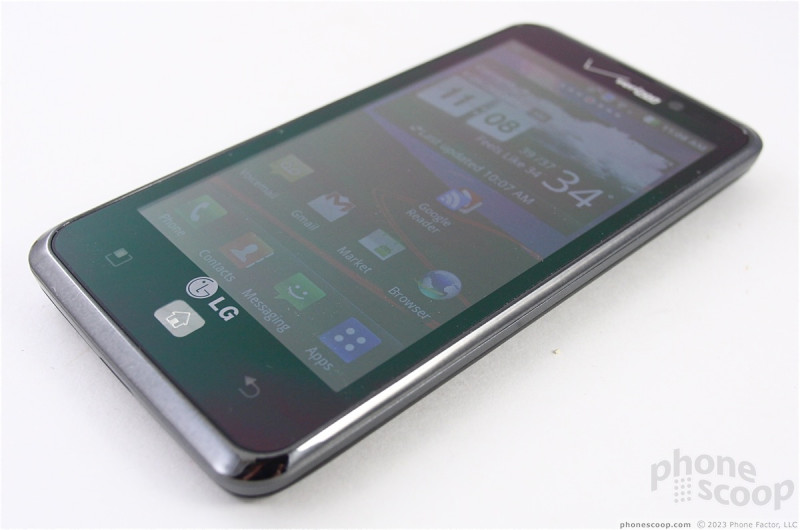










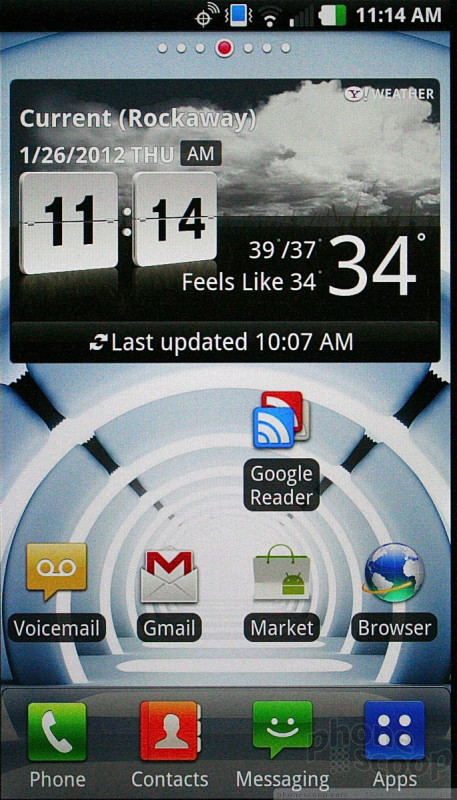




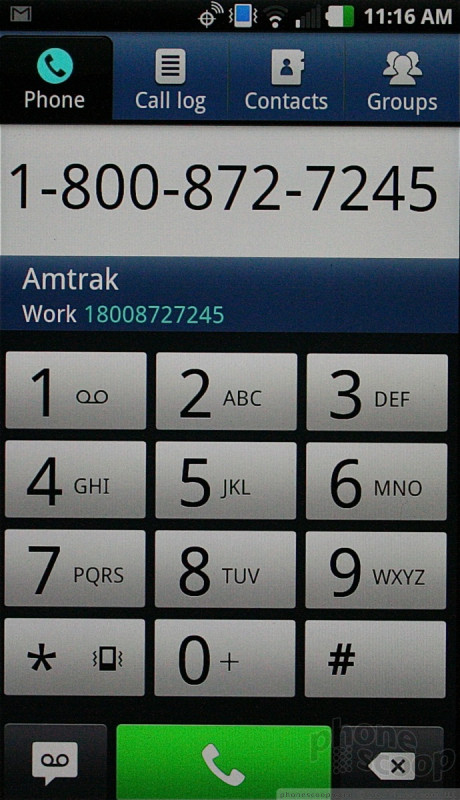





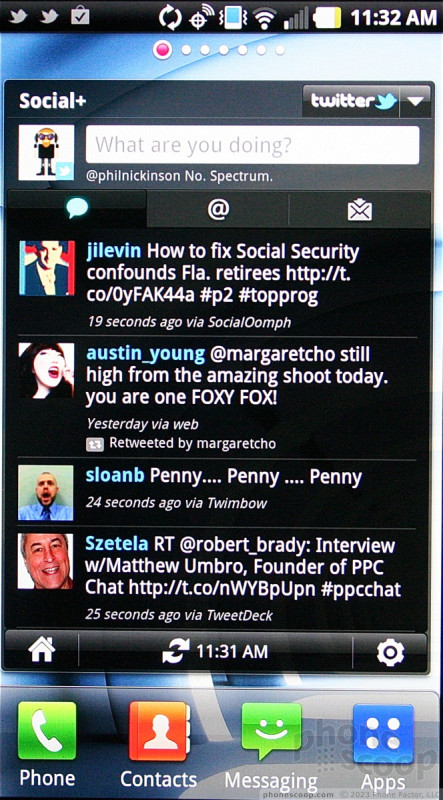



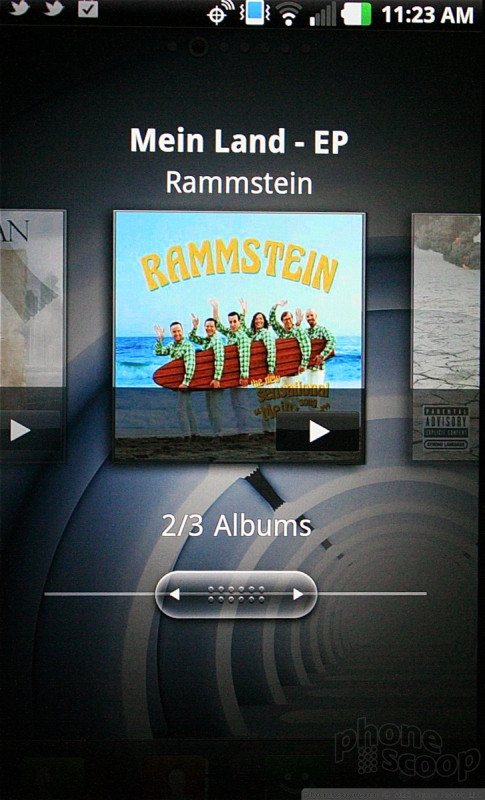



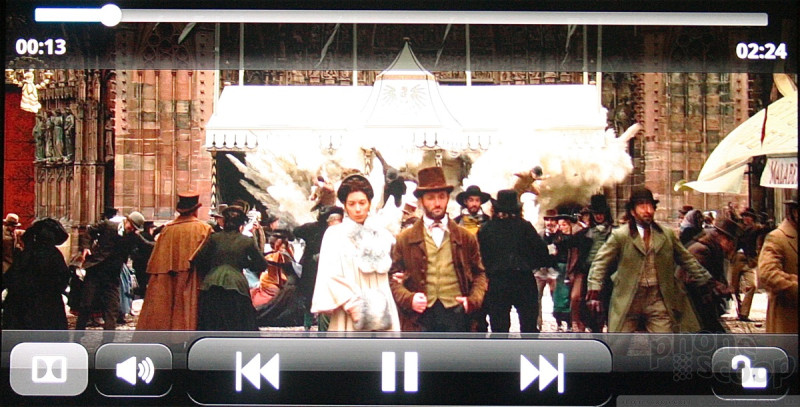


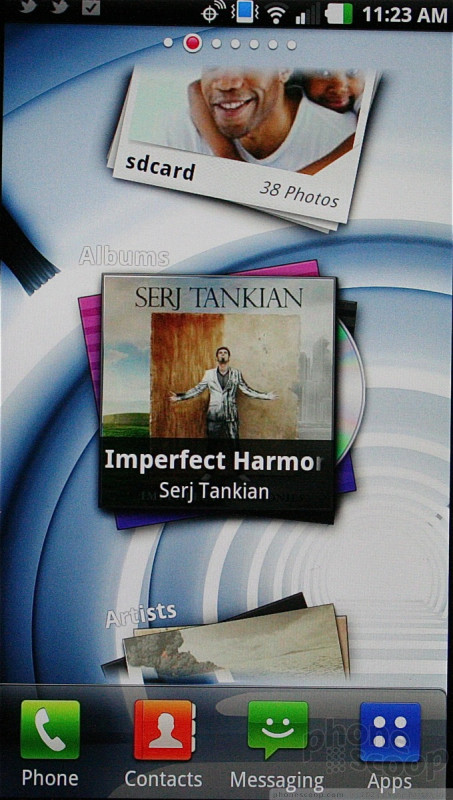


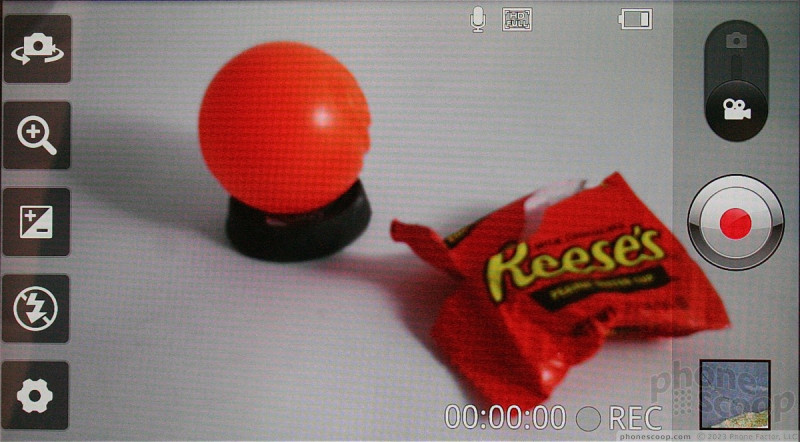



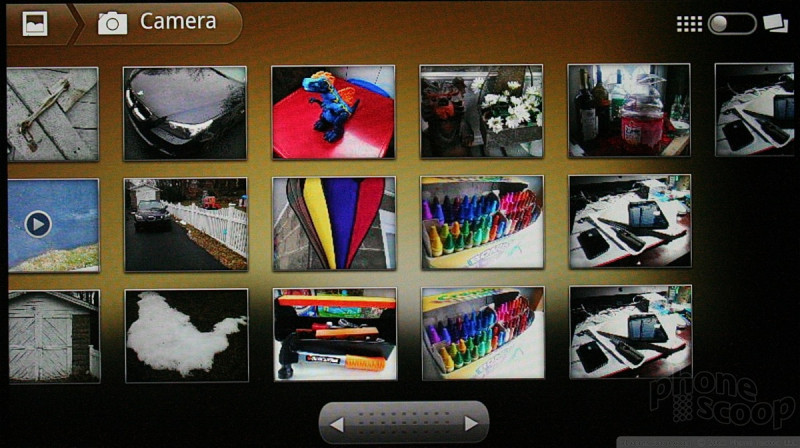



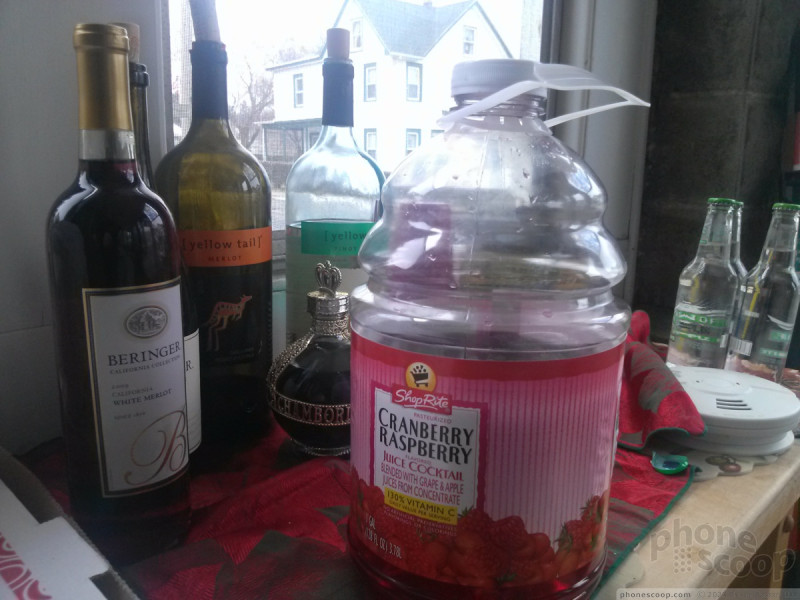











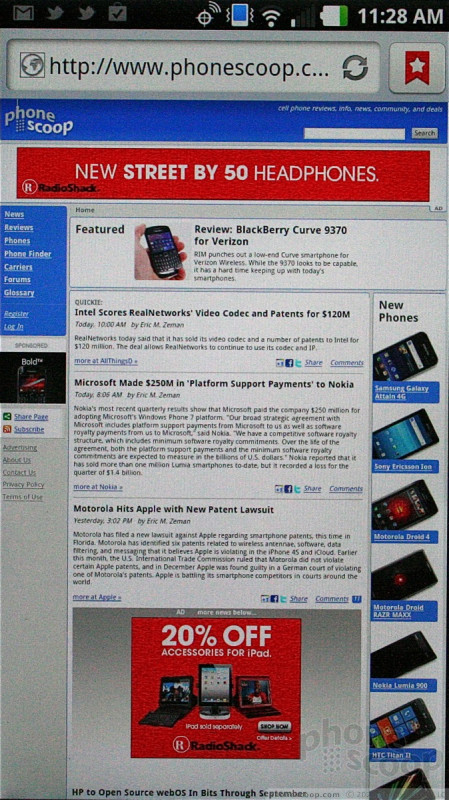



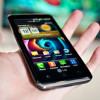 Hands On with the LG Spectrum for Verizon
Hands On with the LG Spectrum for Verizon
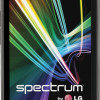 LG Announces Spectrum for Verizon
LG Announces Spectrum for Verizon
 LG Spectrum
LG Spectrum



